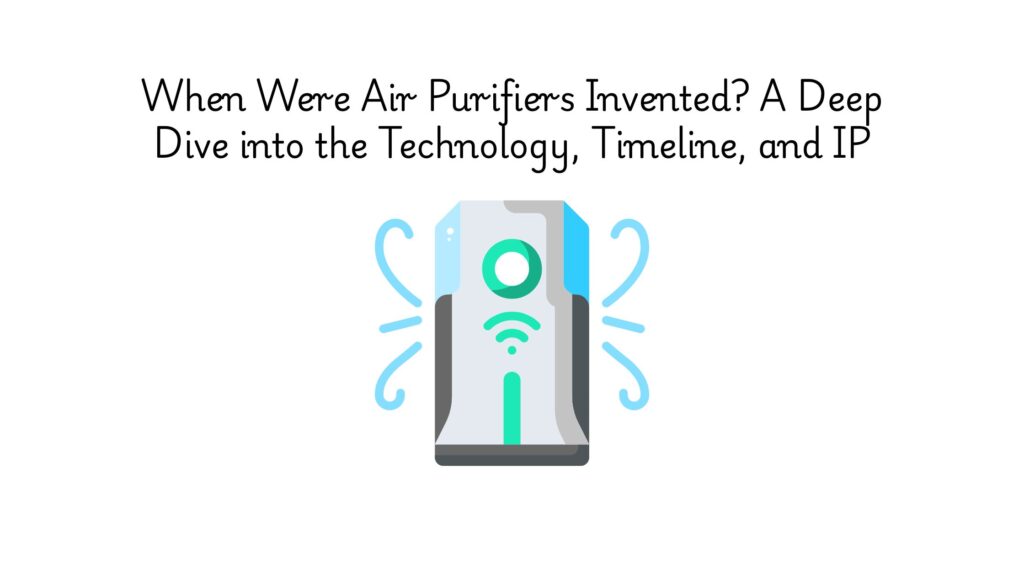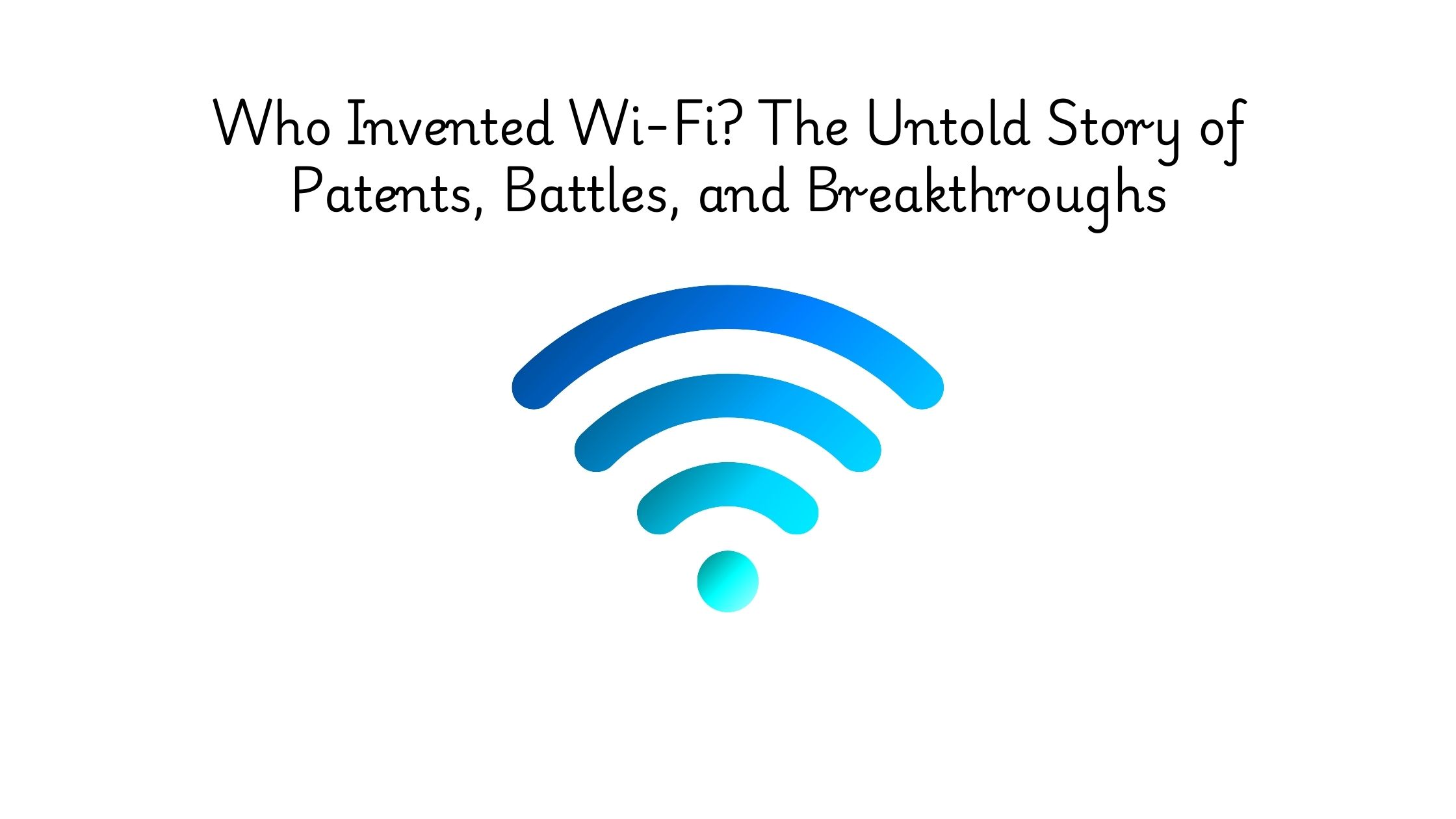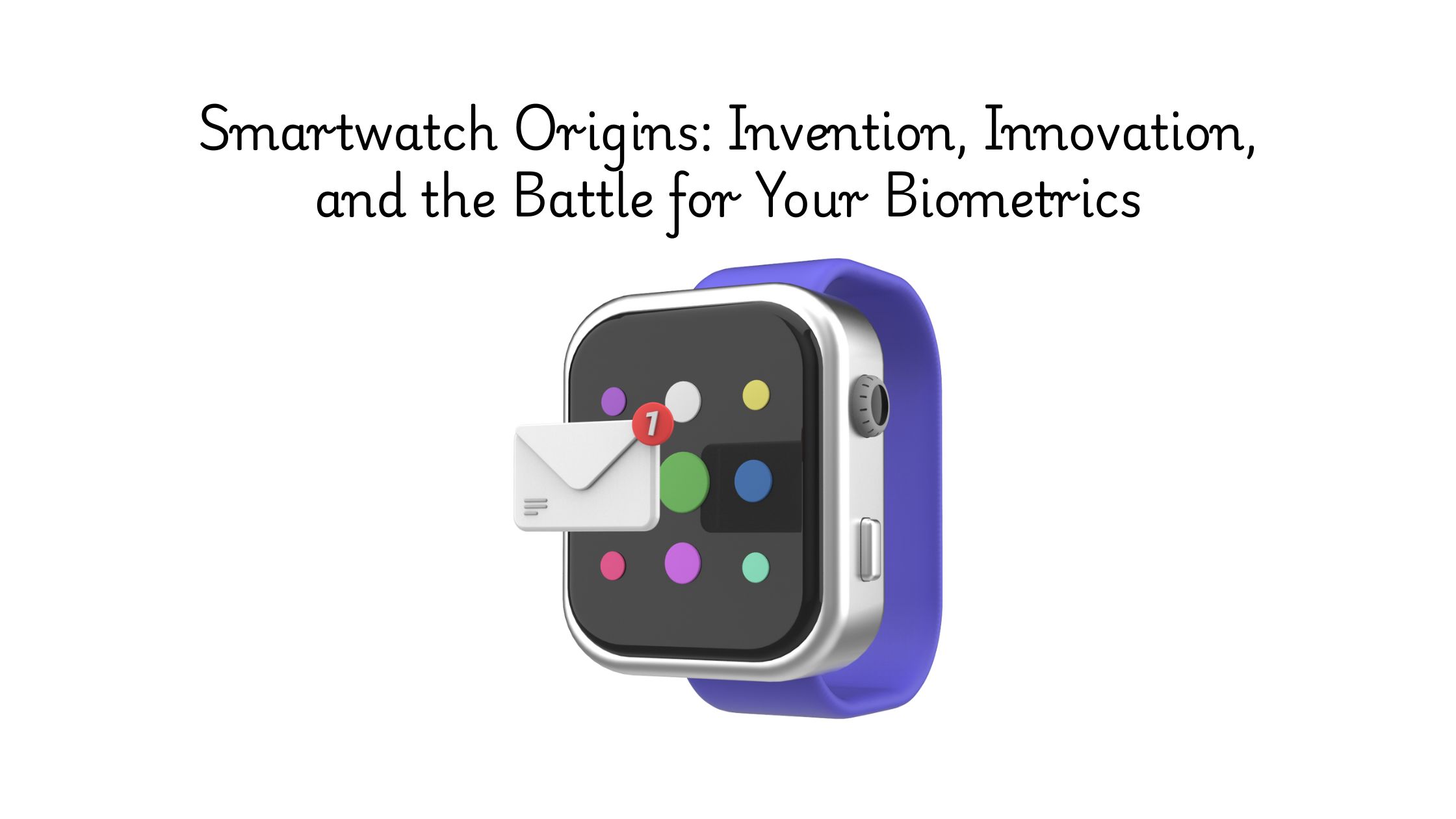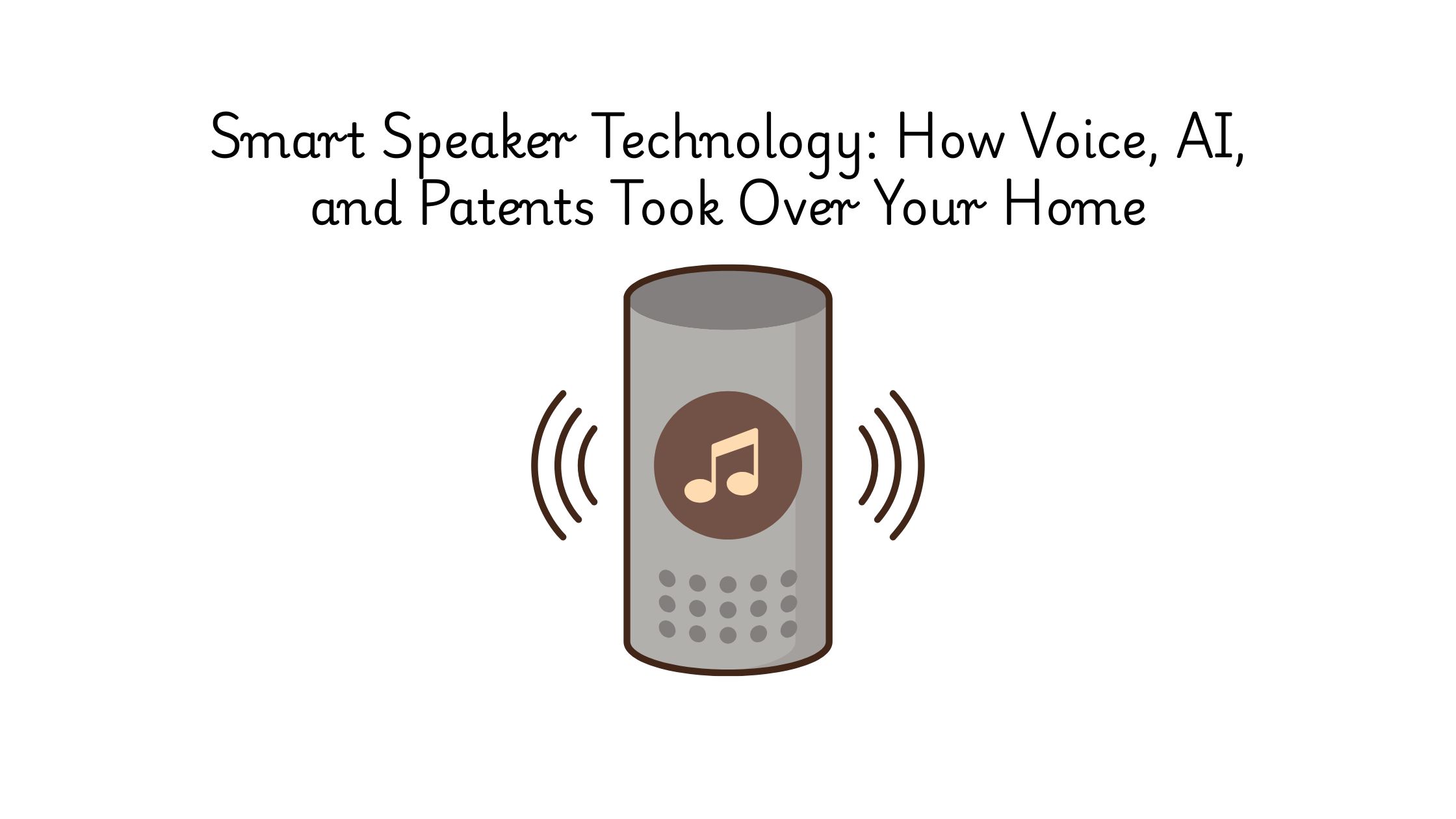You’ve probably walked into a room recently and heard the quiet hum of an air purifier. Maybe it was in your bedroom, your office, or the clinic down the street. It’s easy to take for granted the silent machine that is working 24/7 to clean the air you breathe.
But here’s the thing: most people have no idea when air purifiers were invented. Ask around and you’ll hear guesses ranging from the COVID-19 pandemic to the rise of HEPA filters in the 1980s. The truth is stranger and much older than you’d expect.
Long before smart sensors and app integrations, air purification was a battlefield concern. Think coal mines. Gas masks. Hospitals fighting tuberculosis. Behind every leap was a set of patented ideas quietly shaping how air could be filtered, scrubbed, and made safe again.
In this article, we’ll unpack the real invention story of air purifiers, trace their evolution from industrial safety tools to sleek consumer devices, and spotlight the patents that defined them.
The Origins: When Air Purification Was a Matter of Survival
Long before air purifiers sat on coffee tables in minimalist homes, they existed deep underground, in coal mines. In the early 19th century, miners were exposed to dust, carbon monoxide, and methane. Their only protection was a primitive mask with moistened wool or charcoal, designed to trap toxic particles.
The first major breakthrough came in 1823, when English inventors Charles and John Deane patented a “smoke helmet” designed to help firemen operate in smoke-filled environments. This early apparatus featured a copper helmet and an attached leather hose to supply fresh air via bellows, offering one of the earliest engineered methods of respiratory protection. While not a filtration device in the modern sense, it laid the foundational groundwork for personal air-purifying systems.
Fast-forward to World War I, when the introduction of chemical warfare made clean air a military priority. Engineers and chemists raced to build gas masks that could filter chlorine and mustard gas. The U.S. Bureau of Mines and the Allied Forces collaborated on designs that used activated charcoal and particulate filters, a foundation that still underpins modern air purification.
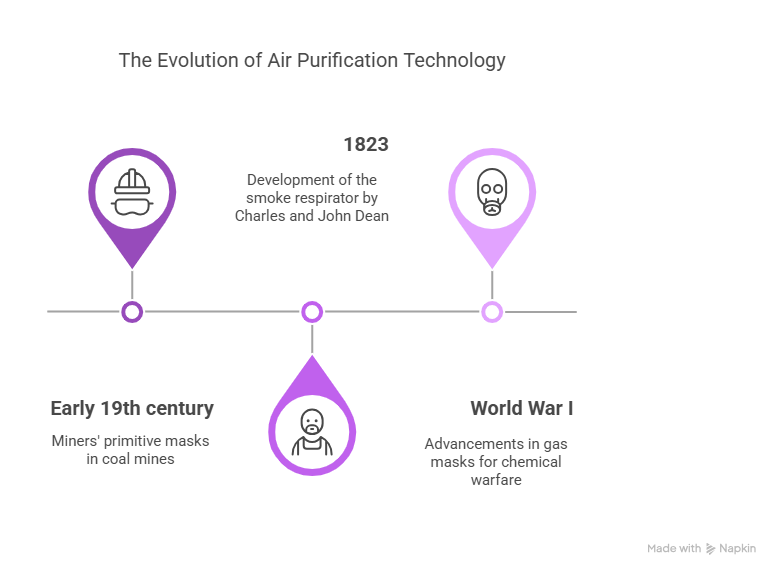
Hospitals Take Notice
By the 1920s and 1930s, hospitals began experimenting with filtered airflow in tuberculosis wards. Negative pressure rooms and rudimentary air exchangers were deployed to reduce airborne transmission, though purification was far from perfect.
One of the earliest patents explicitly describing mechanical air filtration for health use came in 1940, filed by John Stenhouse. It detailed a “respiratory filter” using granular activated carbon and a fiber-based mechanical filter to remove both odors and particulates. Variants of this design would become the backbone of gas masks, industrial filters, and eventually, consumer air purifiers.
Enter HEPA: The Military-Inspired Standard
In the 1940s, during the Manhattan Project, U.S. scientists developed the first High-Efficiency Particulate Air (HEPA) filters to contain radioactive particles. These filters could trap 99.97% of particles as small as 0.3 microns, a level of performance unmatched at the time.
The first patent for a civilian HEPA-style system appeared in the 1950s as inventors looked for peacetime applications in hospitals and clean rooms. It wasn’t until the 1980s and 90s that HEPA filters were miniaturized, commercialized, and marketed for allergy sufferers and households.
From Idea to Real-World Tech: How Air Purifiers Went Mainstream
Air purification didn’t leap into homes overnight. It took decades of evolution, from war labs to hospital wards to allergy-prone households, with each stage marked by new tech, public health concerns, and miniaturization breakthroughs.
1. HEPA Leaves the Lab
Although HEPA was created during the Manhattan Project, it stayed largely industrial for decades. Laboratories, semiconductor clean rooms, and biosafety facilities were among the first to adopt it in the 1950s and ’60s.
In 1963, German inventors Manfred and Klaus Hammes developed one of the first indoor consumer air purifiers using mechanical filtration. Their product, originally designed for asthma patients, would later evolve into IQAir, now a global brand known for its medical-grade filtration systems. This marked one of the first true commercial crossovers from medical-grade tech to home use.
2. Electrostatic and Ionization Take Off in the U.S.
In the 1980s, U.S. brands like Honeywell, The Sharper Image, and Bionaire began pushing air purifiers to a wider consumer base. This wave relied not just on HEPA but on electrostatic precipitation and ion generation, technologies that actively charged particles in the air to attract them to metal plates or encourage them to clump and fall.
While these methods were sometimes marketed with exaggerated claims, they introduced the idea that air purification could be a household feature, not just a hospital-grade service.
3. Globalization and the Rise of Particulate Awareness
In the early 2000s, air purifiers began gaining mass adoption in Asia. It occurred particularly in countries like China, India, and South Korea, where rising concerns over PM2.5 pollution and indoor air quality drove regulatory and market demand.
Companies like Philips, Coway, and Xiaomi built low-cost, compact devices for urban consumers, often bundling them with smart sensors, app control, and real-time air quality monitoring. These innovations were backed by a wave of patents focusing on sensor integration, modular filters, and machine learning-based air optimization.
4. The COVID-19 Acceleration
The COVID-19 pandemic created a seismic shift in how people viewed air quality. Suddenly, HEPA and UV-C sterilization weren’t just for hospitals; they became essential tools in classrooms, offices, restaurants, and homes.
Portable air purifiers surged in popularity, especially those with:
- Multi-stage filtration (pre-filter, carbon, HEPA, UV)
- Smart connectivity
- AI-based adaptive modes that changed fan speed based on pollutant levels
This era also introduced consumer interest in patent-backed sterilization technologies, such as plasma ionizers, photocatalytic oxidation, and ozone-free UV-C systems, many of which had prior use in healthcare or aviation.
The IP That Powered Modern Air Purifier Development
While early air purification concepts date back to the 1800s, it wasn’t until the mid-20th century that they began to evolve into scalable, consumer-ready systems.
This was the period when air purification became an engineered product, not just a scientific idea.
Designs matured. Performance standards emerged. Consumer demand started to scale.
To understand this transition, we used AI-powered search on Global Patent Search tool to trace the patents that shaped the modern era of air purification.

Source: GPS
We ran the query: “Devices that remove airborne pollutants using filters to improve indoor air quality.” for the period 1960-1999. The patents surfaced from this timeframe capture that tipping point.
They reflect how air purification evolved into something practical, commercial, and repeatable, not just theoretical.
Here’s what GPS revealed. This is the list of 15 key patents that influenced the development of air purifier technology during that period, presented in chronological order with reasoning on why they are important:
| Priority Date | Patent Number | Title | Why they matter? |
| 1968-04-05 | SU249948A2 | Device for pressurizing the cockpit of an aircraft and protecting the crew from the effects of military radioactive substances and toxic chemicals | Introduced multistage purification (moisture, toxins, particles) in closed systems; core to indoor purifiers. |
| 1983-06-09 | WO8404913A1 | Method For Reducing The Hydrocarbon Content In Air Or Water | Pioneered use of hydrophobic zeolite filters for chemical filtration; now standard in odor/gas filtration. |
| 1985-02-06 | NO160689B | Procedure To Reduce Organic Compounds In Air Or Water | Extended zeolite-based filtration to trap organic pollutants, key to hybrid chemical-mechanical filters. |
| 1986-01-10 | CA1295816C | Chemical Absorption Filter For Inhaled Air | Established chemical filters for smoke, odors, bacteria, and toxins; similar to today’s HEPA+carbon combos. |
| 1987-09-13 | US4904282A | Filter Apparatus And Method Of Operating Same | Introduced modular, cleanable filter sections, influencing eco-friendly air purifier designs. |
| 1988-06-03 | DE3818993A1 | System For Cleaning Up Polluted Rooms | Combined air filtration and pollutant-absorbing materials in interiors — early version of smart filters. |
| 1989-01-03 | US4905578A | Apparatus For Ventilating Controlled Areas | Defined modular HVAC-integrated filtration systems, a precursor to hospital/industrial air purifiers. |
| 1990-03-30 | FI901635A | Filtering | Early cylindrical exhaust filter design; influenced compact, high-throughput air filter geometries. |
| 1991-01-04 | ITRE910001A1 | Air Filtering In Closed Environments | Unified multiple filter methods in a single unit; shaped today’s multi-stage consumer air purifiers. |
| 1991-05-04 | EP0455044A2 | Rescue Vehicle With Ventilated Interior | Brought air purification to mobile/vehicle environments; influencing car and ambulance air purifiers. |
| 1992-06-22 | JPH063423U | Air Purifier For Semiconductor Equipment | Advanced ultra-clean filtration for gases and particles; laid foundation for cleanroom/HEPA filters. |
| 1993-11-02 | US5423779A | High Efficiency Smoke Evacuator System | One of the first to use ULPA filters; set benchmark for ultra-fine particulate filtration. |
| 1995-09-05 | KR970014544U | Air Flushing Device Of Air Conditioner | Introduced water-based filtration integrated with HVAC, now common in humidifying air purifiers. |
| 1997-01-24 | RU2110318C1 | Universal Dust And Gas Collector | Added granular sorbents for gas removal; inspired hybrid filters in industrial air purification. |
| 1998-02-27 | JPH11248211A | Ventilation Hole With Filter | Added VOC-absorbing and antimicrobial layers; basis for smart home air purifiers with health filters. |
These patents represent milestones in air purification technology, each contributing to the effectiveness and accessibility of air purifiers today.
Beyond Patents: Claims, Lawsuits, and the Complexity of Air Purifier Innovation
Air purifiers might seem like straightforward consumer products, but the technologies behind them often sit at the intersection of science, marketing, and intellectual property.
In some cases, disputes have played out in courtrooms. In others, the battleground was public perception, with companies defending not just patents, but also performance claims, test results, and regulatory interpretations. Let’s look at some of the notable instances:
Molekule vs. Dyson: The Marketing and Patent Collision
One of the most high-profile dustups in this space happened in the late 2010s, when Molekule, a U.S.-based startup known for its PECO (photoelectrochemical oxidation) technology, aggressively marketed its purifiers as superior to traditional HEPA-based systems.
In response, Dyson challenged Molekule’s advertising claims at the National Advertising Division (NAD) in 2020. It led to a decision that Molekule lacked sufficient scientific backing for several superiority claims. While this wasn’t a direct patent infringement case, it sparked public debate about IP-backed tech versus marketing, and Molekule was later sued in a class-action lawsuit over performance claims.
Separately, Molekule has aggressively defended its core technology via patents, which cover its proprietary PECO process involving light-activated nanocatalysts.
The Ionizer Disputes: Sharper Image vs. Consumer Reports
In the 2000s, The Sharper Image heavily promoted its Ionic Breeze purifiers. These were non-filter systems that used ion generation. However, after Consumer Reports rated them poorly and questioned their effectiveness, Sharper Image sued for defamation and lost.
The company later filed for bankruptcy, but not before trying to defend its ionization-related patents and proprietary airflow technology. This episode became a cautionary tale: even with patents, unproven science and exaggerated claims can erode brand trust and legal standing.
Standards, Licensing, and IP Complexity: A Purifier Industry Without a Map
There’s no single authority defining what makes an air purifier “standard-compliant.” Just a mix of regional guidelines, performance metrics, and fragmented patent protection.
And that’s exactly what makes this space so complicated.
Performance Standards ≠ Technology Standards
Air purifiers are often evaluated against performance-based standards, like:
- HEPA (High-Efficiency Particulate Air): defined by the U.S. DOE and ISO (99.97% efficiency at 0.3 microns)
- CADR (Clean Air Delivery Rate): established by the Association of Home Appliance Manufacturers (AHAM)
- EN 1822 / ISO 29463: European and international standards for filter classification
But these benchmarks measure results, not how those results are achieved. There’s no governing body saying:
- What filtration tech must be used?
- How should smart sensors operate?
- What counts as “UV-C sterilization” or “plasma ionization”?
That opens the door to dozens of tech paths, each potentially patented and rarely interoperable.
The Licensing Landscape: Patents Without Pools
There are no patent pools for air purification. Innovation is protected company by company:
- Molekule patents its PECO oxidation process.
- Dyson patents multi-stage cyclonic separation and filter housing airflow design.
- IQAir, Philips, and Blueair file for modular filter arrangements, pre-filter configurations, and sensor logic.
Each company operates on its patent island, and that means:
- Cross-licensing is rare.
- Compatibility across brands is minimal.
- Enforcement happens via direct litigation or takedowns, not industry mechanisms.
The Result: Innovation at the Edge of Ambiguity
With no shared licensing structure or technical roadmap, the air purifier industry evolves unevenly:
- Some brands invest heavily in IP-backed R&D.
- Others rely on open-source filtration components but bundle them with proprietary apps or data services.
- Meanwhile, low-cost imports often distinguish between imitation and infringement, especially when they copy physical designs or firmware behavior.
This creates a quiet but real IP minefield, especially as features like app control, real-time air quality feedback, and AI-based filtration adjustment become standard, often protected by overlapping patents.
For new entrants or product developers, navigating this space requires more than checking performance benchmarks. It means understanding who holds the rights to the underlying innovations and whether you’re building on clear ground.
How Global Patent Search Helps You Navigate This Tech?
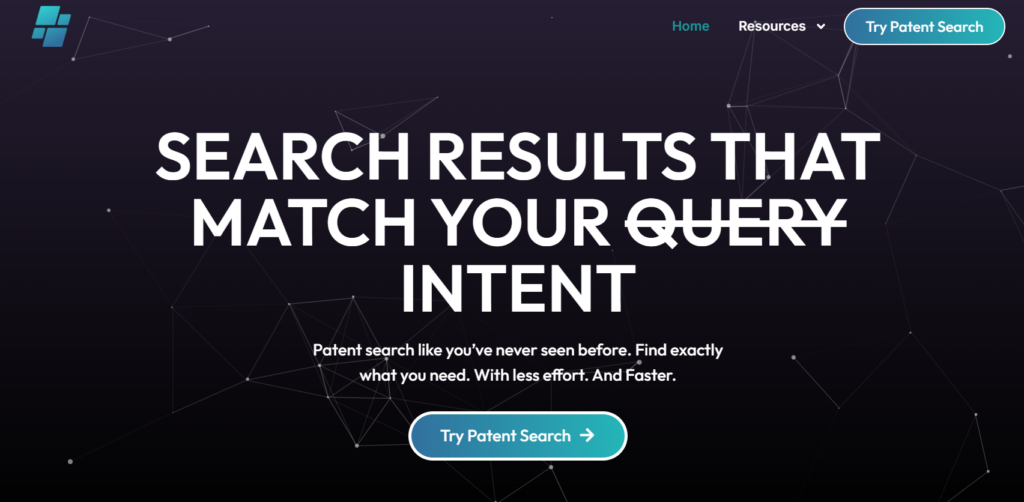
That’s where Global Patent Search becomes essential.
With GPS, you don’t need to know the IPC code or patent number. You can start with what you do know: the real-world feature, the user experience, or the idea behind the tech:
- “An air purifier that turns on automatically when pollution spikes”
- “A purifier that uses UV-C light to kill airborne bacteria”
- “A multi-stage filter with a washable prefilter and smart sensor”
GPS takes that plain-language input and maps it to existing patents filed across jurisdictions, companies, and timeframes.
Whether you’re:
- Vetting new product features.
- Tracing how a filtration method evolved.
- Looking for prior art before filing your patents.
- Or just curious about who actually invented the tech behind the purifier in your office.
GPS gives you a clear view into an otherwise fragmented IP landscape, and helps you separate true innovation from marketing noise. Explore Global Patent Search and uncover the patents that power the air you breathe.

